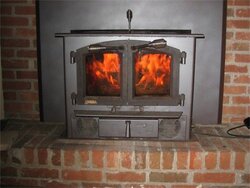Hello - Just purchased a Sierra T4500 from a private seller. I have had a fire going the past three days and notice that the glass in the corners is looking a little "burnt" (mostly on the outside tops of both pieces of glass). Is this normal?
The glass was perfectly clear before I used it. When do you know you need to replace the glass and/or gasket and where would I go about purchasing these? Does anyone know the part numbers that I need?
Thank you.
The glass was perfectly clear before I used it. When do you know you need to replace the glass and/or gasket and where would I go about purchasing these? Does anyone know the part numbers that I need?
Thank you.


